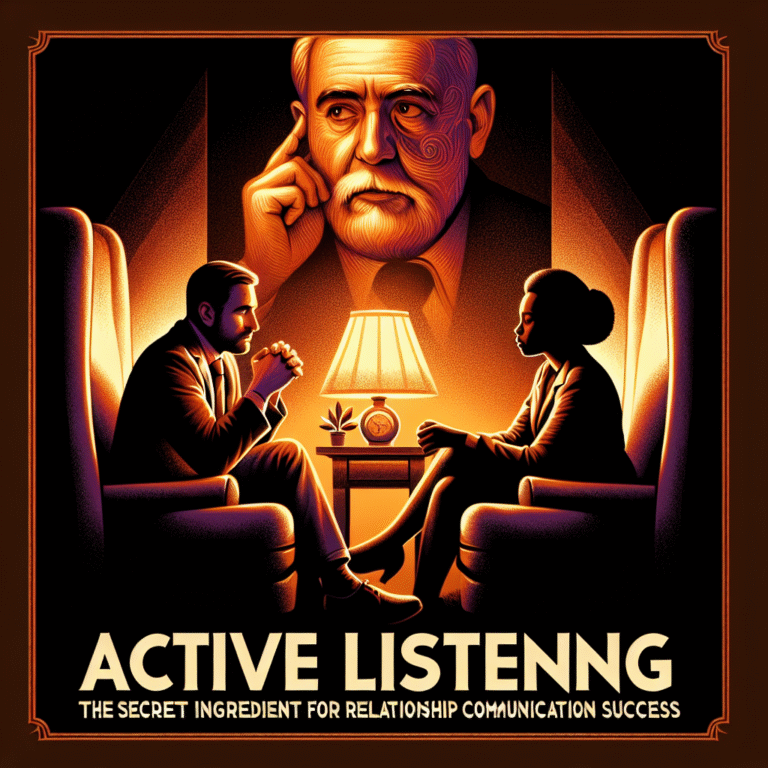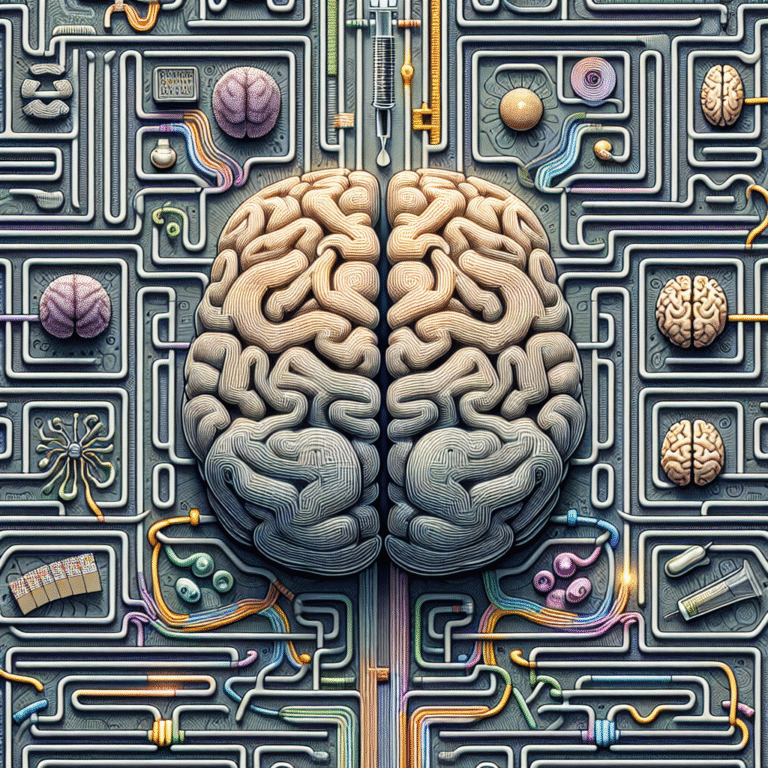
Decoding Desire: Proven Behavioral Psychology Principles that Drive Ad Engagement
Introduction
In the ever-evolving landscape of advertising, understanding consumer behavior is the golden key to crafting campaigns that not only capture attention but also drive engagement and conversion. As marketers grapple with the overwhelming choice consumers have, the question becomes, what lies behind their decision-making? "Decoding Desire: Proven Behavioral Psychology Principles that Drive Ad Engagement" dives into the core motivations that fuel ad interactions, shedding light on the intricate dance between human psychology and advertising efficacy. From emotional triggers to cognitive biases, this exploration is essential for anyone looking to elevate their marketing game.
Understanding Human Desire: The Bedrock of Engagement
The Psychology of Desire
At the heart of every ad interaction lies desire—a complex interplay of needs, wants, and emotional triggers. One of the most groundbreaking principles in behavioral psychology is Maslow’s Hierarchy of Needs, which suggests that individuals are motivated by a series of needs ranging from basic physiological requirements to advanced self-actualization.
Table 1: Maslow’s Hierarchy of Needs
| Level | Description |
|---|---|
| Physiological | Basics like food, water, warmth, rest |
| Safety | Security and safety |
| Love/Belonging | Relationships and connectivity |
| Esteem | Prestige and feeling of accomplishment |
| Self-Actualization | Achieving personal potential, self-fulfillment |
Marketers can leverage this hierarchy by identifying the specific needs their ads address, tailoring messaging that resonates deeply with the target audience.
Emotional Triggers: The Sparks of Engagement
Emotions play a pivotal role in decision-making. Research by psychologists like Antonio Damasio has shown that emotions significantly influence our logic and reasoning. Ads that evoke strong emotional responses—be it happiness, sadness, or nostalgia—tend to drive higher engagement rates.
Case Study: The "Always" #LikeAGirl Campaign
One of the most striking examples of harnessing emotional triggers came from the "Always" #LikeAGirl campaign. By transforming a common insult into an empowering message, the brand struck an emotional chord that resonated with many, resulting in a significant increase in brand engagement and sales.
Analysis: This campaign successfully decoded desire by addressing deeper societal issues while fostering a sense of community, ultimately leading to higher engagement levels.
Cognitive Biases: Shortcutting Decision-Making
The Influence of Cognitive Biases
Cognitive biases are systematic patterns of deviation from norm or rationality in judgment. Marketers can strategically utilize these biases to enhance ad effectiveness.
- Scarcity Principle: Limited-time offers create urgency and drive action.
- Social Proof: Showcasing reviews and testimonials establishes trust.
- Anchoring Effect: The first piece of information presented (like an initial price) heavily influences subsequent judgments.
Table 2: Common Cognitive Biases Used in Advertising
| Bias | Description | Example |
|---|---|---|
| Scarcity | Availability limited to increase desire | “Only 3 left in stock!” |
| Social Proof | Trust established through others’ experiences | “Join the 1 million people who love our product.” |
| Anchoring | Overemphasizing an initial piece of info | Displaying a higher MSRP next to the current sale price can boost perceived value. |
Case Study: Booking.com’s Use of Scarcity
Booking.com effectively incorporates the scarcity principle into its advertising by stating how many people are currently viewing a hotel. This simple element significantly heightens the urgency and perceived demand, driving quicker booking decisions.
Analysis: By decoding desire through cognitive biases, Booking.com has capitalized on urgency, motivating consumers to finalize their bookings quickly.
Crafting Resonant Messaging
The Art of Persuasion
Persuasive messaging is not just about selling a product; it’s about addressing the desires and motivations of the consumer.
The AIDA Model
A foundational framework in advertising is the AIDA model (Attention, Interest, Desire, Action), guiding marketers on how to effectively lead audiences from awareness to conversion.
Table 3: AIDA Model Elements
| Element | Purpose | Strategy |
|---|---|---|
| Attention | Grab audience’s focus | Eye-catching visuals and headlines |
| Interest | Engage the audience’s curiosity | Compelling storytelling and innovative content |
| Desire | Appeal to emotional or logical needs | Highlight benefits and unique value proposition |
| Action | Prompt immediate customer action | Strong CTAs and time-sensitive offers |
Case Study: Nike’s Inspirational Advertising
Nike has mastered the AIDA model, creating ads that not only sell sports gear but inspire and evoke strong emotions tied to personal achievement—capturing both attention and desire effectively.
Analysis: Nike’s ongoing success demonstrates how decoding desire leads to resonant messaging, ultimately enhancing engagement.
The Role of Personalization
Tailoring Experiences
Personalization has become paramount in the digital landscape. By employing data analytics, marketers can offer tailored experiences that resonate with individual desires.
- Behavior-Based Targeting: Ads that reflect consumers’ past interactions lead to higher engagement rates.
- Dynamic Content: Modifying content based on user profiles enhances the relevance of ads.
Case Study: Amazon’s Personalized Recommendations
Amazon uses algorithms to provide personalized recommendations based on user behavior. This approach significantly boosts engagement and sales by decoding individual consumer desires.
Analysis: With personalization, Amazon creates a shopping experience that feels tailored, increasing the likelihood of user interaction.
Leveraging Social Media for Engagement
The Power of Social Platforms
Social media offers a unique opportunity to engage with consumers on a personal level. Brands leveraging platforms like Instagram, Facebook, and TikTok to decode desire can create authentic connections that drive interaction.
Influencer Partnerships
Influencers act as modern-day trust agents. Collaborating with influencers allows brands to tap into established relationships, driving engagement through their reach and credibility.
Case Study: Glossier’s Community-Driven Marketing
Glossier stands out by fostering a community around its brand, utilizing social media to engage directly with consumers and gain insights into their preferences.
Analysis: This community-focused approach has revolutionized its ad engagement strategy, leading to a loyal customer base.
Data-Driven Insights: The Future of Ad Engagement
The Role of Analytics
Understanding what drives ad engagement necessitates a reliance on data. Marketers can use tools like Google Analytics to track consumer behavior, identifying patterns that illuminate desires.
Driving Continuous Improvement
Constantly testing and refining ad campaigns based on data-driven insights ensures that marketers remain responsive to changing consumer desires and preferences.
Conclusion
In summary, decoding consumer desire through behavioral psychology principles is a crucial strategy for enhancing ad engagement. By understanding the psychology behind needs, employing emotional and cognitive triggers, crafting personalized experiences, and leveraging social platforms, marketers can create campaigns that resonate deeply. The journey of understanding human desire and engagement is ongoing, challenging marketers to stay attuned to the dynamic landscape of consumer behavior.
FAQs
1. What is meant by "Decoding Desire"?
Decoding desire refers to understanding the underlying needs and motivations that drive consumer behavior and engagement with advertising.
2. How can psychology enhance ad campaigns?
Psychology provides valuable insights into how emotions and cognitive biases impact decision-making, allowing marketers to craft more effective messages.
3. Why is emotional engagement important in advertising?
Emotional engagement fosters a deeper connection with the audience, leading to increased brand loyalty and higher conversion rates.
4. How can I use data to improve ad performance?
By analyzing consumer behavior through data, marketers can identify trends and preferences, tailoring campaigns to resonate more with target audiences.
5. What role does storytelling play in advertising?
Storytelling helps to create relatable narratives that capture attention and connect emotionally with the audience, enhancing overall engagement.
Through strategies and principles discussed, marketers are equipped not just to sell products, but to connect with their audiences deeply and authentically.















